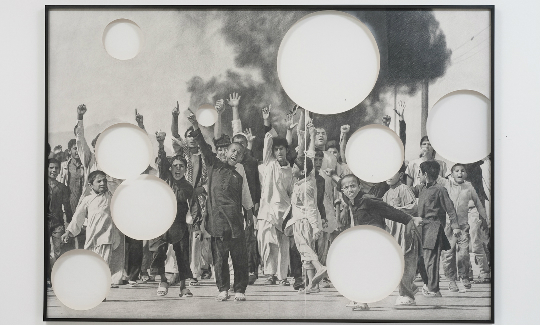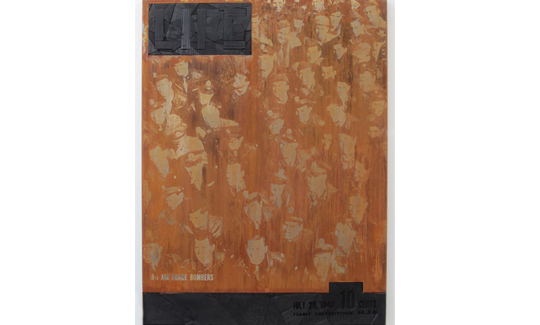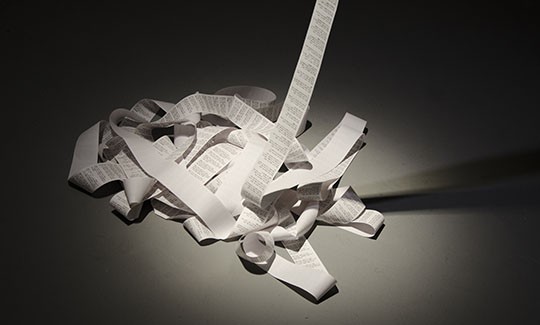In the press and in the media – whether printed, broadcast, or published online – we are presented with distorted information. This commissioned, filtered information is carefully chosen and edited before invading our lives and dictating our actions. The exhibiting artists seek to expose and emphasize the contexts and conditions in which data and news items are organized and presented. They explore the system of socio-political, technological, and economic forces that mobilize the media industry.
20th-century political and avant-garde art used media to promote social change. These artists believed that the critical stance could inspire a revolution, promoting progress and creating a new reality (Marinetti, for instance, chose to publish his Futurist manifesto in a newspaper, in 1909).
The artists participating in this exhibition depict an ongoing dystopian moment, in which truth does not exist, nor has it ever existed, and, indeed, we are mistaken in seeking it. In fact, as philosopher Yuval Noah Harari argues, the "post-truth" condition is an intrinsic human trait. All we can do is be aware of this fact and reveal the political and economic forces operating behind the false mask of information, uncovering the way these factors influence consciousness and collective memory. The artists express these ideas by turning the technological means of creating these "truths" (such as printing and photography) against them. In addition, they create works that are labor-intensive, in opposition to the immediacy and speed of digital screen technology.
These principles inform the works of several artists. Karl Haendel, for example, emphasizes the mode of operation of search engines and the manipulations inherent in printed news items. Haendel's works engage with contemporary images taken directly from cover stories and advertisement pages. The work by Tzila Hassin and Carmel Barnea Brezner Jonas illustrates the failure of the news production mechanism. And Matthew Day Jackson, in a large-scale etching of the cover of Life magazine from 1943, presents an iconic image of American soldiers during World War II. Jackson coined the term "horriful" (a hybrid term combining the words "horror" and the "beautiful") to convey the idea that beauty and horror are two sides of the same coin, "separated only by the thickness of the paper stock" in his words. Many of the works presented in this exhibition relate to this concept – works that are labor-intensive, hypnotic, impressive and large-sized, that seek to describe a deceptive, invasive, and manipulative reality.
Text: Anat Martkovich



